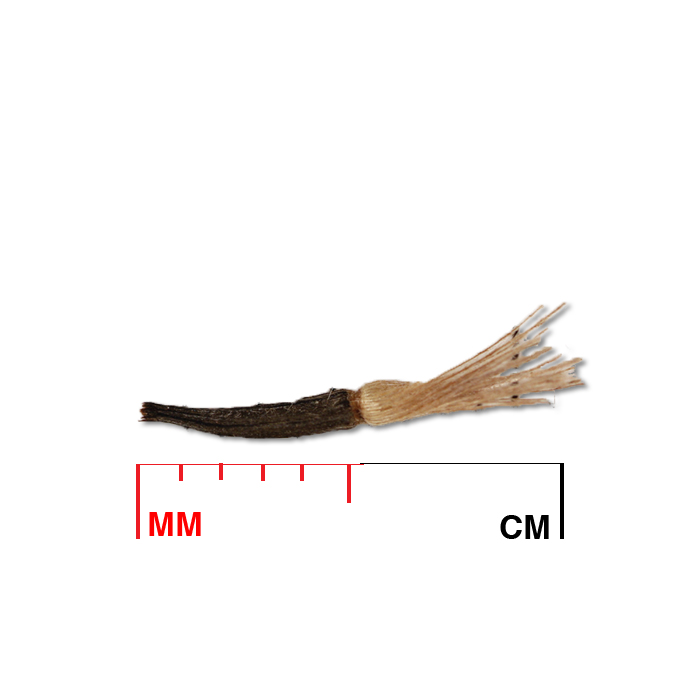tall blazing star
tall blazing star dickeye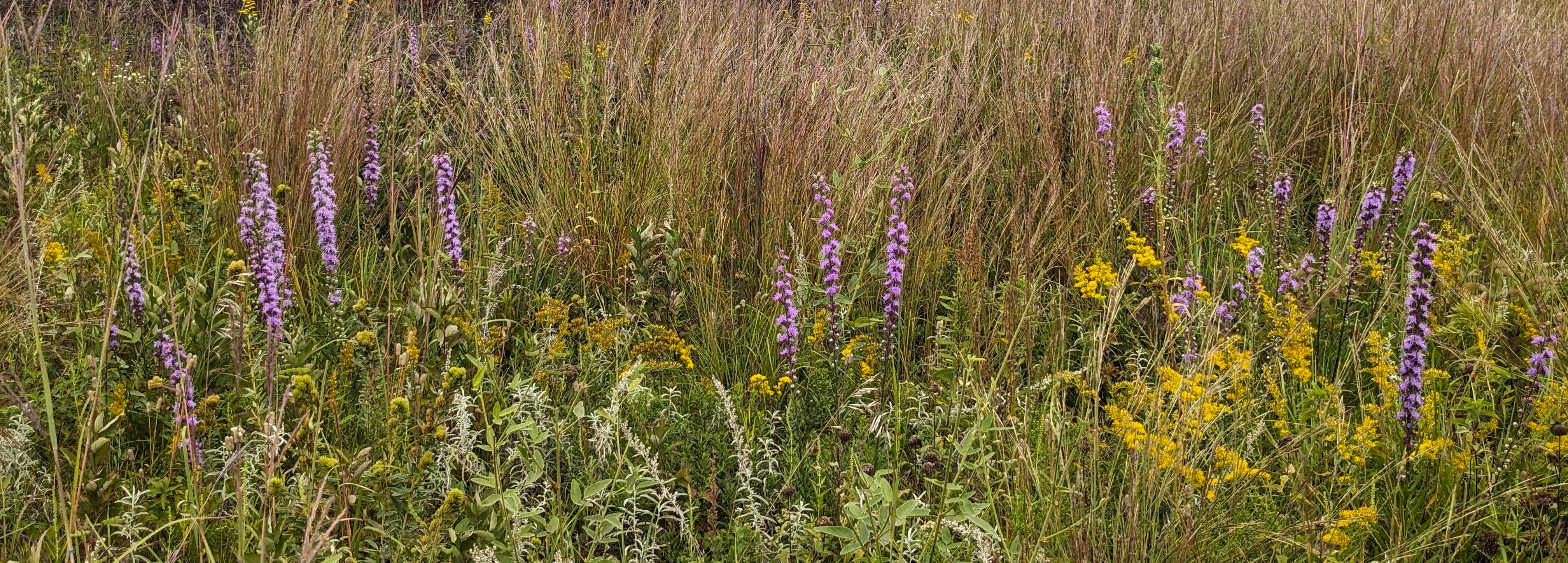
Liatris aspera Michx.
Alternate Common Names: rough blazing star, rough blazingstar, rough blazing-star, tall gay-feather, gayfeather, button snakeroot, rough gayfeather
Scientific Synonyms: Lacinaria scariosa var. intermedia Lunell, Liatris aspera var. intermedia (Lunell) Gaiser, Liatris aspera var. salutans (Lunell) Shinners, Liatris spheroidea var. salutans (Lunell) Shinners
Family: aster family (Asteraceae)
Functional Group: forbs (wildflowers)
Description
- Life cycle and growth form
Perennial with a woody corm that can be divided.
Height: 1-4 ft
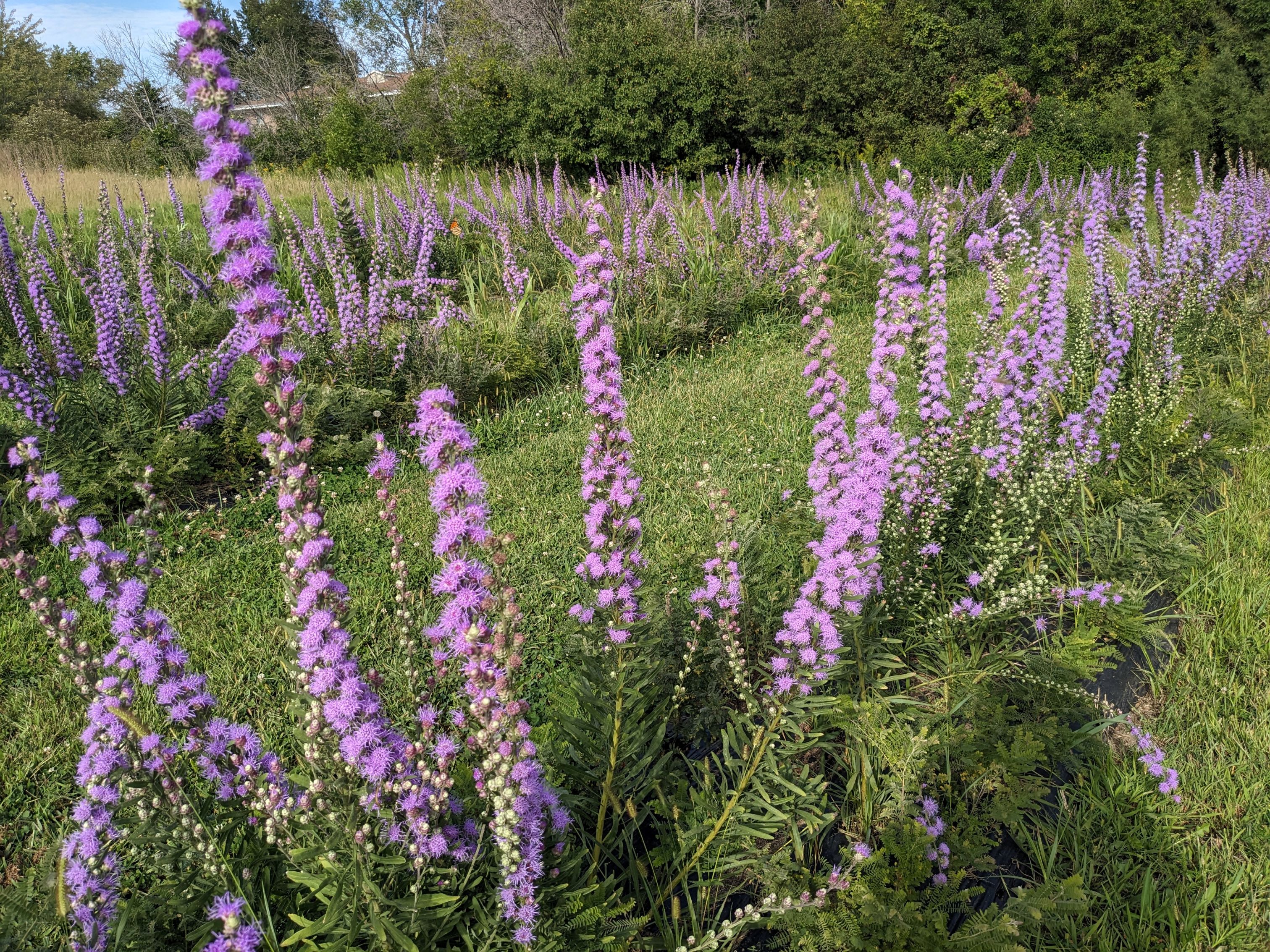
- Leaves and stem
Leaves narrowly lanceolate, alternate, with a prominent central vein and short stiff hairs; stem is rigid and rough with short hairs, green or purple in color, usually unbranched.
- Flower, fruit and seedhead
Flower: Pinkish purple heads, 1 in across, are spaced along the stalk, button-like, in a 6-18 in long spike; plants in production plots may be taller and produce robust, branched inflorescences. Heads of Liatris aspera are usually sessile or very short-stalked, compared with the stalked (pedunculate) heads of Liatris ligulistylis, Rocky Mountain blazing star, which is otherwise quite similar. Bracts on the underside of L. aspera heads are strongly cupped, while L. ligulistylis bracts tend to be flattened toward the top.
Fruit/seedhead: Dark brown seeds are 1/4 in long, ribbed, with a light brown pappus (fluff) that is finely barbed but not feathery; wind dispersed.
Pollination: Insects such as bees, butterflies, moths, and flies
- Seed
Seed characteristics
Seeds per ounce: 16,000 (IA NRCS)
1000 seed weight: 2.11 g (Seed Information Database)
Description: “Seeds” are achenes, nearly black, about 1/8 in to nearly 1/4 in long, with tufts of light brown hairs (pappus).
Typical seed test
PLS: 93% (n = 10)
Purity: 96% (n = 10)
Germination: 27% (n = 8)
Dormancy: 66% (n = 10)
(averages obtained from n tests of purchased seed lots)
- Habitat and range
Habitat: Dry to dry-mesic, even sandy or rocky soil; full sun; prairies, savannas, prairie remnants along railroads, upland forests, limestone glades. Upland, very well-drained, loamy soils are preferred for seed production. If soils are too dry or poor, seed production will be curtailed.
Conservation status: Global- G4, apparently secure; North Carolina- S1, critically imperiled; South Carolina- S2, imperiled; Georgia and Virginia- S3, vulnerable (NatureServe)
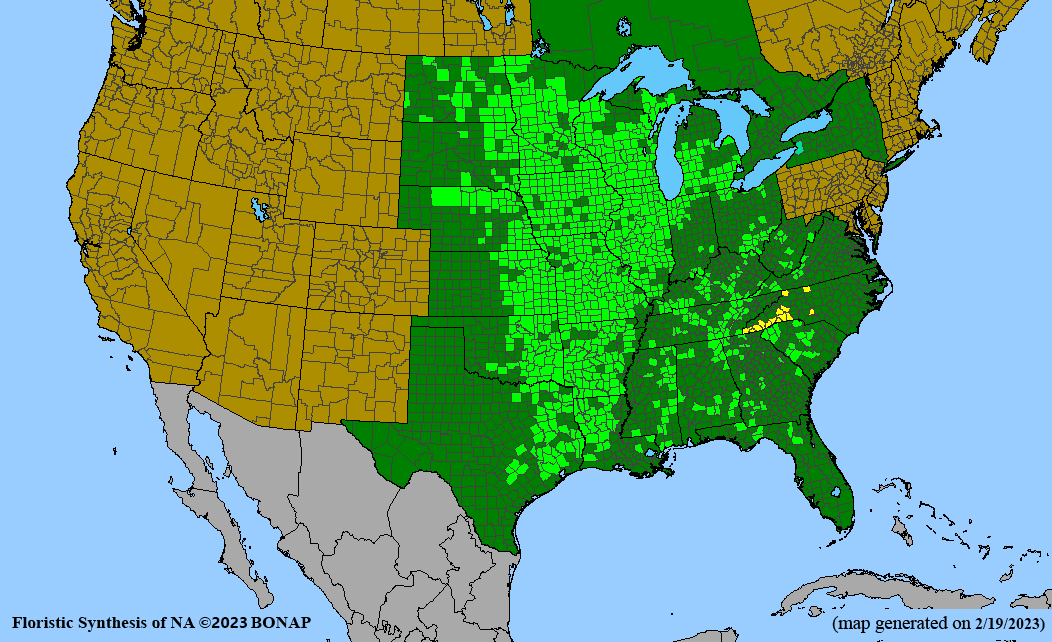
General Comments
This species is best propagated in the greenhouse, and transplanted in spring into a weed-free planting bed or weed barrier. Seedlings develop pea-size corms after two months in the greenhouse. Sometimes first year corms are exposed by frost-heaving over the winter, and may be eaten by voles. Species in the genus Liatris are known to hybridize, therefore proper isolation should be maintained between related species to avoid hybrid seed production (Levin 1968, Menhusen 1972). Liatris species are also produced commercially for the cut-flower industry and some species and cultivars have become popular in gardening and landscaping.
Recommendations for Seed Production
- Establishment for seed production
Direct seeding
Not recommended for this species
Greenhouse
Seed pre-treatment: Wet stratify 8-12 weeks at 40˚ F. Seed sometimes becomes moldy in stratification, and some growers add fungicide to the stratification media.
Sowing: Sow seed 1/4 in deep in the greenhouse two months before the last frost free date.
Transplanting: Harden off, transplant into bare soil in rows and mulch or transplant into a weed barrier at 8 in intervals after all danger of frost is past.
- Stand management
Weeds: Mow/cultivate between rows, mulch within rows. Post emergence grass herbicide, tillage, hoeing, hand roguing. Very sensitive to soil disturbance during bolting/flowering, so clip weeds rather than pulling or hoeing once flower stalks are apparent.
Pests: Voles will eat and/or cache corms, rabbits and deer eat young shoots, goldfinches consume seed as it ripens.
Diseases: Powdery mildew, root-knot nematodes, stem rot, verticillium wilt.
Hybridization risk: This species has been known to hybridize with related species Liatris acidota, L. ligulistylis, L. punctata, L. pycnostachya, and L. squarrosa.
- Seed production
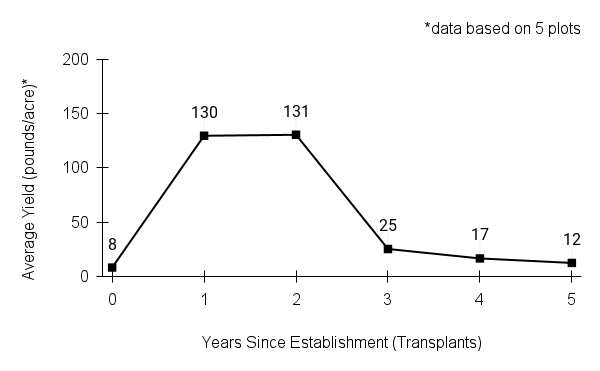
First harvest: Remains vegetative first year (seedlings), abundant flowering/seed production occurs second year. Fall corm division/transplanting results in abundant flowering the following growing season.
Yield: 8-130 bulk pounds/acre (extrapolated from harvests of 5 plots)
Stand life: Peak harvests second year. Good harvest third year if proper soils. Stand declines significantly fourth year and after. Plants tend to lodge second year when flowering.
Flowering date: early August - early September in northern Iowa
Seed maturity/Harvest date: late September - mid-October in northern Iowa
Seed retention: wind dispersed soon after maturity
Harvest date range at TPC (2003-2023): Sept 29 - Nov 6
Recommended harvest method: Combine at maturity, but before pappus is dry and fluffy. Seedheads mature from the top down along a stalk. When the topmost heads are fluffy, break open a few of the lower heads and observe for signs of maturity: dark-colored seeds that separate easily from the base of the head. Small plots may be hand harvested by clipping stalks as the seed matures, then drying the cut material in a building. Dry seed threshes easily from stalks.
- Seed cleaning and storage
Cleaning process: Pre-clean by scalping thru 1/2 in mesh to remove large particles and make the material flowable, brush gently with soft-bristles to remove ‘plumes’ (pappus), using care not to damage seed coat, then air screen.
Seed storage: cool/dry (33-50° F, 30-50% RH); stores well for a few years if seed is not damaged during cleaning.
Released Germplasm
Source Identified material: Northern Iowa Germplasm (IA Zone 1), Central Iowa Germplasm (IA Zone 2), Southern Iowa Germplasm (IA Zone 3)
- References
Chayka, K. (n.d.). Liatris aspera (rough blazing star). Minnesota Wildflowers. https://www.minnesotawildflowers.info/flower/rough-blazing-star
Cochrane, T. S., Elliot, K., & Lipke, C. S. (2014). Rough blazing-star. In Prairie plants of the University of Wisconsin-Madison Arboretum (3rd ed., p. 95). University of Wisconsin-Madison Arboretum.
Hilty, J. (2019). Rough blazingstar - Liatris aspera. Illinois Wildflowers. https://www.illinoiswildflowers.info/prairie/plantx/rgh_blazingstarx.htm
Houseal, G. A. (2007). Forbs wildflowers. In G. A. Houseal (Eds.), Tallgrass Prairie Center’s native seed production manual (pp. 38–39). Tallgrass Prairie Center - University of Northern Iowa.
Kartesz, J.T., The Biota of North America Program (BONAP). 2023. North American Plant Atlas. (http://bonap.net/napa). Chapel Hill, N.C. [maps generated from Kartesz, J.T. 2023. Floristic Synthesis of North America, Version 1.0. Biota of North America Program (BONAP). (in press)]
Levin, D.A. (1968). The Structure of a Polyspecies Hybrid Swarm in Liatris. Evolution, 22(2), 352-372. https://doi.org/10.1111/j.1558-5646.1968.tb05903.x
Menhusen, B.R. (1972). Ecology of the Prairie Species of the Genus Liatris. Third Midwest Prairie Conference Proceedings. Manhattan, Kan.: Division of Biology, Kansas State University. https://search.library.wisc.edu/digital/AL7JMUVRYYXDZO8S/pages/A56MVY3FXXELEL8L
NatureServe. 2024. NatureServe Network Biodiversity Location Data accessed through NatureServe Explorer [web application]. NatureServe, Arlington, Virginia. Available https://explorer.natureserve.org/. (Accessed: February 29, 2024).
Nesom, G. L. (2020, November 5). Liatris aspera Michaux. Flora of North America. http://floranorthamerica.org/Liatris_aspera
Runkel, S. T., & Roosa, D. M. (2009). Rough blazing star. In Wildflowers of the tallgrass prairie: The upper Midwest (2nd ed., pp. 220–221). University of Iowa Press.
USDA NRCS National Plant Data Team. (n.d.). Liatris aspera Michx. USDA plants database. https://plants.usda.gov/home/plantProfile?symbol=LIAS
Species Guide Updated 2/14/2024
